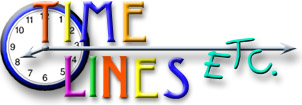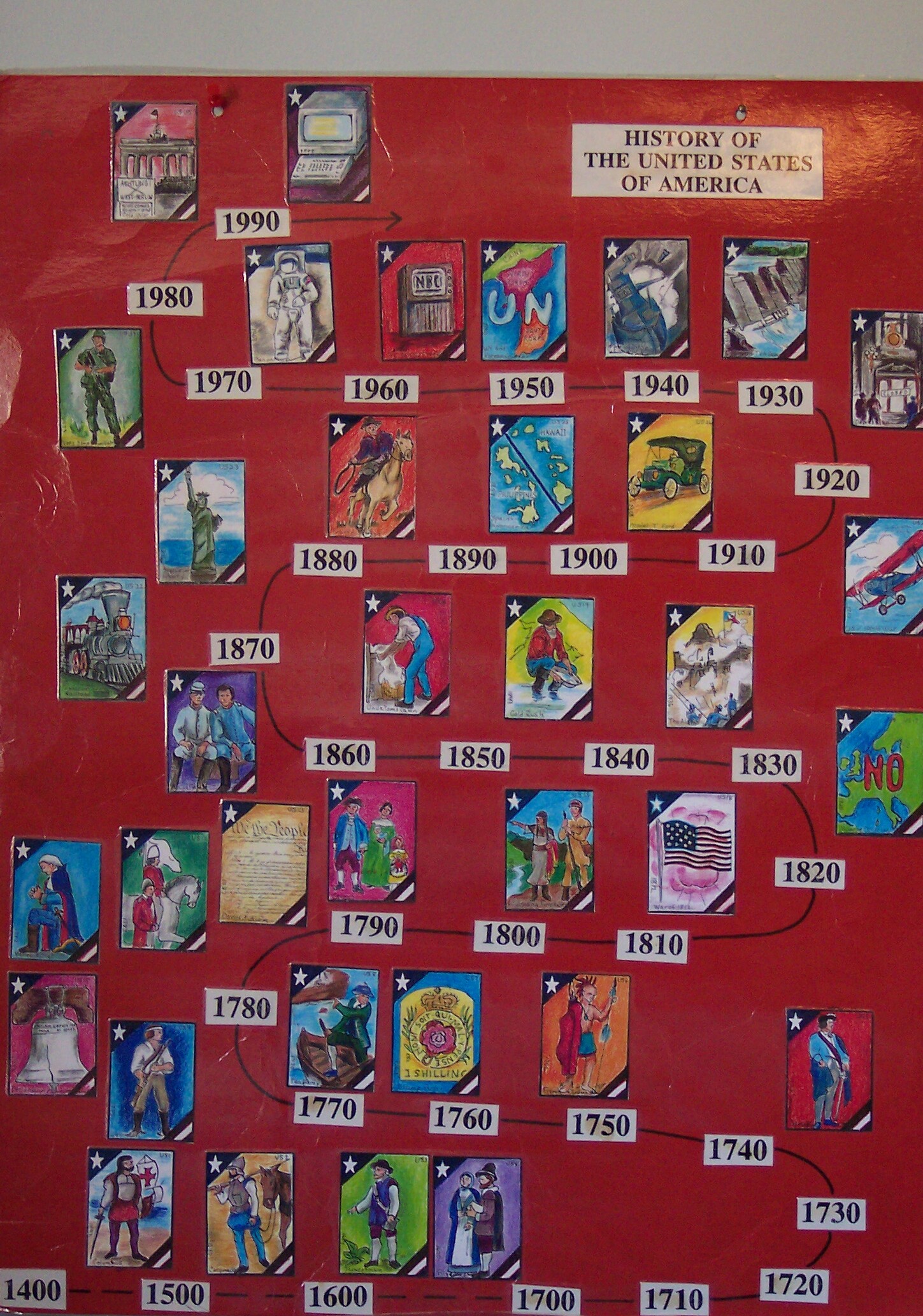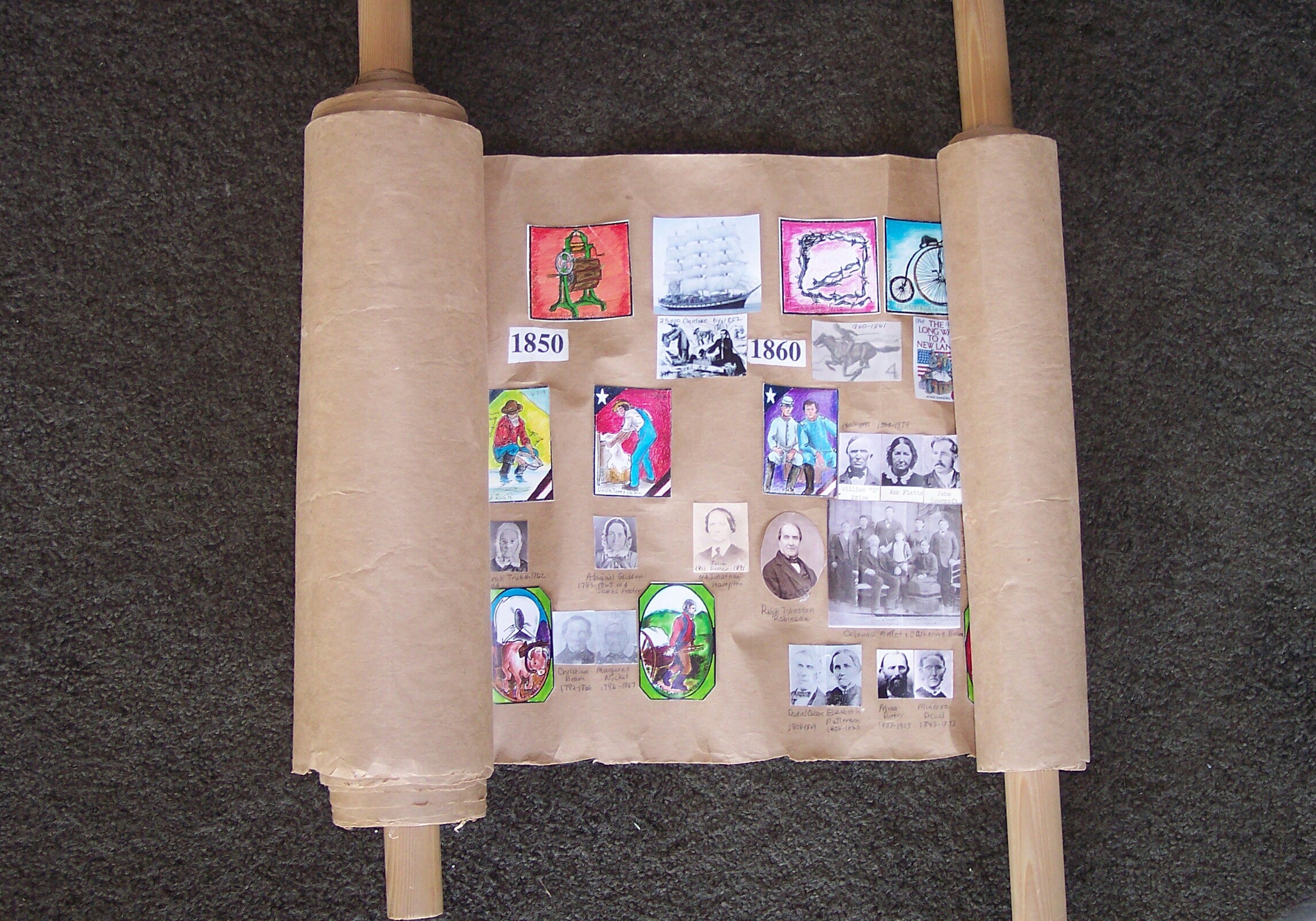

What is a time line? A time line is a linear representation of important events. It shows the sequence in which events occur. It may include specific dates and may be illustrated as well. A time line may simply list, in order, a few events in someone's life on a piece of paper or it may cover a whole wall and illustrate things that happened throughout the world over thousands of years. With your time line packet you will receive ideas and instructions on various ways to make different kinds of time lines using the illustrations that are included.
The timeline scroll was made with a roll of heavy duty mailing paper. Before unrolling the paper, the roll was cut in half with a saw (but a utility knife might also work). The two halves were glued together and each end was then glued to a large wooden dowel. Completely unrolled, the scroll is almost as long as a basketball court with plenty of room to put events from the creation to the present day, but it can also be used on a table top. Just go to the time period that you are studying and open up a small portion. You can see that we added photos of our ancestors so our children can see what was happening when some of their family was alive.
Are Time Line Etc. packets to be used only as a supplement or unit study, or can they be used an entire history course? One of the best things about the time lines is their versatility. They can be used as a unit study or to supplement what you are already using, OR they may be used as an entire history course, depending on the ages and individual needs of your students. In each of the time line packets the historical summaries for the 36 people/events have additional people, places, and events of significance written in upper case letters for easy reference. These capitalized words suggest topics for further research for older students. Some families who use the time line packets as the basis of their entire history curriculum have their students do all their additional research on the internet. I have very young children as well as high school age students. How would I use these time line packets with children of various ages? Your Time Line packet is designed to be used by all of the students in your family regardless of grade level. Together everyone can learn the words and actions in the History in Action and some basic information about each illustration. Principles from the principle-based study guides can also be discussed and applied with students of all ages. Older students will want to learn more of the information in the historical summaries, while junior high and high school students may wish to use the summaries as a springboard for more detailed reports and research. When I have all of the figures on our time line, how can I tell which time line figures go with which packet? You will notice that each historical packet from Time Lines Etc. has a distinctive shape, or frame, for the illustrations in that packet. For example, Invention illustrations are square, while the figures for US History are rectangular with a star in one corner and stripes in the opposite corner. This feature makes it possible to distinguish from a distance which illustrations go with which packet. When figures from more than one packet are used on the same time line it is then possible to tell which packet will contain the historical summary for any given picture. I have all of the time lines packets. What is the best way to organize the reference materials? Create a reference notebook for your time line. You can file all of your historical summaries in a three ring binder and use the covers from each packet to make divider pages. Then if you want information about a particulary illustration, it will be easy to locate the summary by going to that section of your notebook. If you want to add information to your reference notebook, you may fill more than one notebook. Eventually you may want to have a separate notebook for each history.
© 2020 Time Lines Etc. |
||

